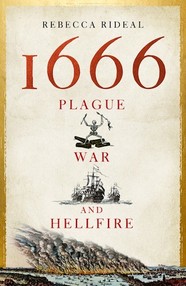 It is unsurprising that there seems to be a new appetite for the Stuart period, given the seventeenth century brought us some of the best and most enduring drama ever written, a regicide, a civil war, a republic, a restoration and, in the aftermath of all this, one of the most dramatically eventful and devastating years in England’s history. 1666 is, like 1066, a date that even those who weren’t listening in history class remember. It was, of course, the year London was burned to the ground. This cataclysmic event came in the wake of a significant and humiliating naval defeat against the Dutch at Bergen and an epidemic of bubonic plague, the virulence of which hadn’t been experienced in England for hundreds of years. Rebecca Rideal’s book 1666: Plague, War and Hellfire skilfully contextualises these events in a way that allows us to understand how they touched society from top to bottom. With a cinematic eye for detail Rideal throws us into the action, circulating between vivid descriptions of the cityscape and those bustling through it, before sweeping us out into the English Channel, into the naval action against the Dutch, and back again to teeming London. Rideal’s style is vivid and fluent, dextrously incorporating a multitude of quotes from primary material, demonstrating that the London she describes is not the work of her imagination but a patchwork vision stitched entirely from fragments of contemporary commentary. Rideal’s London pulsates with humanity. We feel bustled along the narrow streets, fighting for a safe path close to the wall, the stench of ordure all around us with the cries of the hawkers and the scurry of sedan chairs. The rendition of the many personal stories of the city dwellers, and the minutiae of their lives, through all strata of society, lends the narrative a touching richness. The diarists Pepys and Evelyn are a constant presence, offering commentary as events unfold. We witness the Earl of Rochester, better known as the pox-ridden rake of fable, aged sixteen, demonstrating enormous courage aboard ship whilst pounded by artillery at Bergen. We have a glimpse, too, of Aphra Behn’s career as a female spy, long before her great success as a playwright and see Newton sitting in his rural orchard and Milton at his desk. The womanising Charles II is vibrantly depicted, as is his Catholic brother and heir, James, both out fighting the inferno shoulder-to-shoulder with their subjects. We also learn of a multitude of other Londoners, like the Mitchells, a family of Westminster booksellers, following their individual fates as the devastating events unfold. Rideal has excavated entries in parish registers and the anecdotes of contemporary commentators to animate her city with those who might otherwise have been forgotten. We come to understand how the plague crept up on the population, the death toll increasing week by week, and the way in which it disproportionately affected the poor who hadn’t the means to leave the capital for cleaner air. These people were so devastated by the epidemic they can barely have been aware of England’s catastrophic defeat at Bergen. Rideal describes the second Dutch War in detail, demonstrating the impact of human failing and poor communication that led to England’s humiliation. If the book has a weakness perhaps it lies in the exhaustive rendering of the sea campaign, which becomes a little over-complicated at times. Though Rideal deftly remedies this by frequently returning to parallel events. In London the plague was receding. Those who had fled the epidemic were returning to the capital, to grieve their dead and resume their lives, when the famous conflagration took hold in Pudding Lane. Restoration Londoners sought ways to explain this relentless series of misfortunes. Some saw it as God’s punishment for the regicide of Charles I, an act that even seventeen years on continued to hang heavily over the English psyche. Millenarist cults had long associated the year with the demonic connotations of the number 1666, identifying it as marking the final destruction of the world. Others, in a way that is grimly familiar, blamed England’s enemies, particularly for the fire, and raging xenophobia raised its head. Dutch and French were assaulted in the streets and stories abounded of foreign operatives flinging fireballs through windows. The truth about the fire was simply too prosaic to be believable. But the quality that shines through the pages is the resilience of the human spirit, that sense of grace under fire that can only be found in the darkest of times. It is Rideal’s vivid and confident style, teamed with meticulous research and a curiosity for the quotidian that makes 1666: Plague, War and Hellfire a memorable, gripping and very satisfying read. 1666: Plague, War and Hellfire is published in hardback on 25th August, 2016 by John Murray.
0 Comments
Leave a Reply. |
Subscribe to Elizabeth's quarterly newsletter below:Archives
June 2018
Categories
All
|
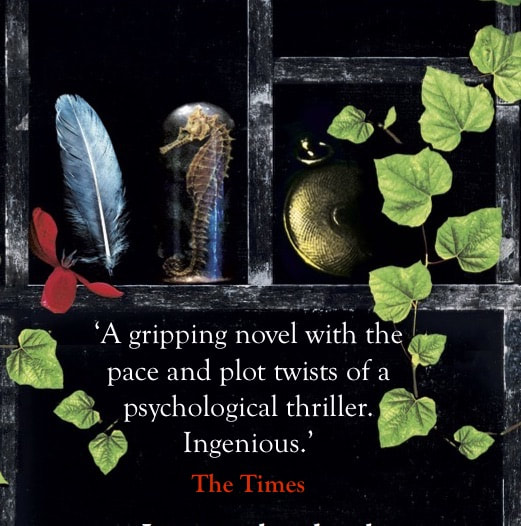
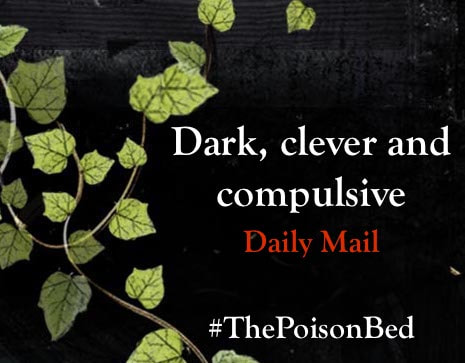
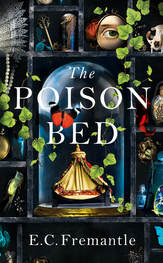
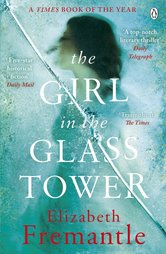
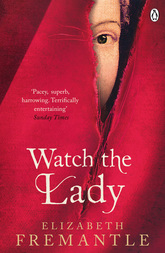
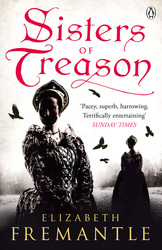
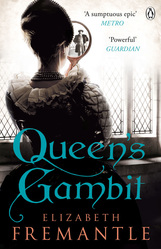
 RSS Feed
RSS Feed
